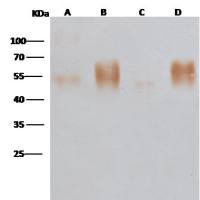Methods to Study the Ras2 Protein Activation State and the Subcellular Localization of Ras-GTP in Saccharomyces cerevisiae
互联网
554
Ras proteins were highly conserved during evolution. They function as a point of convergence for different signalling pathways
in eukaryotes and are involved in a wide range of cellular responses (shift from gluconeogenic to fermentative growth, breakdown
of storage carbohydrates, stress resistance, growth control and determination of life span, morphogenesis and development,
and others). These proteins are members of the small GTPase superfamily, which are active in the GTP-bound form and inactive
in the GDP-bound form. Given the importance of studies on the Ras protein activation state to understand the detailed mechanism
of Ras-mediated signal transduction, we provide here a simple, sensitive, and reliable method, based on the high affinity
interaction of Ras-GTP with the Ras binding domain (RBD) of Raf1, to measure the level of Ras2-GTP on total Ras2 in Saccharomyces cerevisiae
. Moreover, to study the localization of Ras-GTP in vivo in single S. cerevisiae
cells, we expressed a probe consisting of a GFP fusion with a trimeric Ras Binding Domain of Raf1 (eGFP-RBD3), which was
proven to be a useful live-cell biosensor for Ras-GTP in mammalian cells.









